If you are squeamish, don’t like to see dead animals or can’t stand the sight of blood you may want to skip reading this post. Or you can push past seeing animals that have died of natural causes and read about why I felt it was important to express my opinions about this matter.
Recently KSL.com; a Utah news station, had an article about a Vole (a small rodent) infestation In Farmington, specifically in the neighborhood of Foxboro Community. While I sympathize with the residents about the damage being done to their yards I am disturbed by the advice many of the people commenting have left on the story. The article and the comments can be read here.
Two main suggestions came up repeatedly:
- Get an outdoor cat, they will kill them
- Use poison to kill the Voles
To explain that area one must think of wetlands that have turned into housing developments and human encroachment on natural areas. Think of nearby marshes and flat grasslands where voles and other animals have thrived since before the pioneers settled into the Salt Lake Valley. It is prime real estate for voles. It is prime real estate for all of the other creatures too.
Some of the folks want to blame UDOT because the Legacy Parkway was near the Foxboro Community. Those voles were on the land that the Parkway was built on long before they broke ground. The Legacy Parkway isn’t the problem.
Some of the folks want UDOT, the City or Davis County to clear the voles off of the public lands near the Foxboro Community and the Legacy Parkway because they believe that will solve the vole infestation. It won’t work.
What some of these people fail to realize that there are cycles in nature where populations of animals rise and fall and that those cycles can depend on many factors. We had a super mild 2011/2012 winter which possibly had an effect on the vole population. Voles breed all year long but harsh winters can reduce the number of off spring that survive the frigid temperatures. A mild winter… more surviving voles. We had an early spring in 2012 where the grasses and other vegetation, aka vole food, greened up early and provided the voles with enough nourishment to have more litters.
I’m a bird photographer, I am out in the wilds a lot and I have observed a dramatic increase in the vole population in the locations that I visit to photograph birds in the last year. I’m not upset or disturbed by it because I know that the population will decrease because of that natural cycle. The fall of the high population can be weather related, caused by predators consuming the voles or both. And more.
Outdoor Cats:
First, let’s look at outdoor cats and the problems they can cause to wildlife, people and how living outdoors can cause them to live much shorter lives.
- Outdoor cats that are not vaccinated can carry diseases that can be transmitted to wildlife and the people they come in contact with. That is a fact. Think rabies, feline distemper and feline immunodeficiency.
- Outdoor cats can be hit by cars, poisoned, attacked by dogs, get lost or stolen.
- Outdoor cats that are not spayed or neutered cause an increase in feral cat problems.
- Outdoor cats are spreading diseases to our native cats, our Mountain Lions and Bobcats.
Estimations have shown that annually outdoor cats in the U.S. have been the cause of death for hundreds of millions of birds, some of these birds are on the threatened and endangered lists and a few species are facing extinction if we don’t do something about the outdoor and feral cat problem now.
You might think I am anti-cat at this point. I’m not. I have had cats in the past, I love to cuddle & play with my friends cats now.
However; I did not and would not have an outdoor cat because of the danger to the cats and to wildlife. You can read more about outdoor cats at the American Bird Conservancy (ABC) here and about cats & predation here.
Poison Control:
Not a good idea at all. Poisons are bad for people, animals, the environment and upset the balance of nature.
- Poisons can kill children who don’t know that what they are touching or ingesting is harmful.
- Poisons can kill your pets.
- Some of those poisons stick around for years and have long term effects.
- Poisons might kill the natural predators of voles after the predator ingests them.
- Aren’t we all bombarded by enough chemicals whose long term health effects are unknown each and every day?
What is to say after a poison kills a rodent that your family pet will not pick it up and eat it and then die? What is to stop a predatory bird that is protected under the Migratory Bird Act from eating the poisoned rodent and dying? For people on well water how do you know for certain that those poisons won’t migrate into your drinking water?
Poisons are too risky. For you. For me. For our children’s children. For our planet.
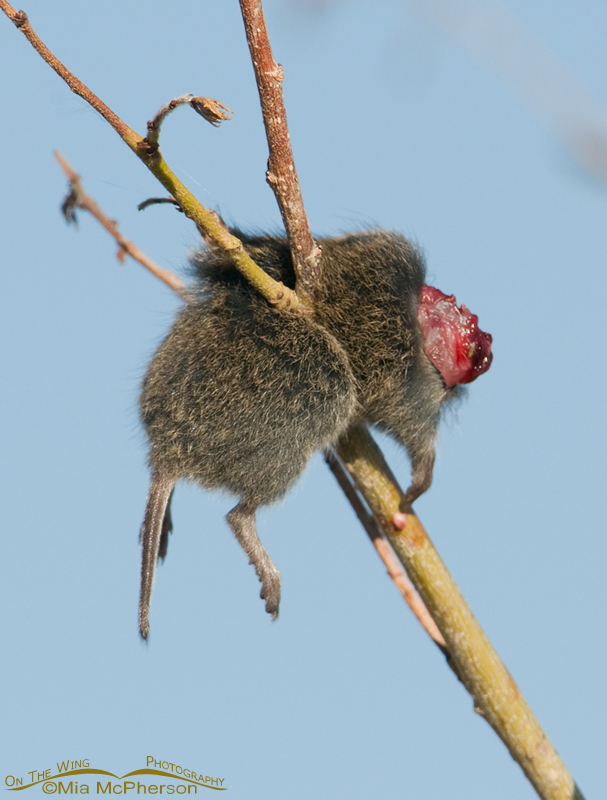 This is a Vole. This is a Vole after a native predator kills it for nourishment. This is Nature.
This is a Vole. This is a Vole after a native predator kills it for nourishment. This is Nature.
When I saw this vole wedged into a tree on Antelope Island State park a while ago I stopped so I could take photos of it. Maybe I knew it would come in handy one day for a blog post of importance. At the time I wasn’t sure whether a Loggerhead Shrike cached it or if it was an American Kestrel that did it. Shrikes are well known for impaling their prey to cache it.
BNA (Birds of North America) shows this under American Kestrels under food habits:
Prey often but not always decapitated; hidden in grass clumps, tree roots, bushes, fence posts, and tree limbs and cavities, etc.
Regardless of whether it was a Shrike or a Kestrel that stuck this dead vole in the tree, it died a natural death and the bird had sustenance. 100% nature.
Native predators of voles, also known as the Vole Control Patrol:
Hawks & Falcons
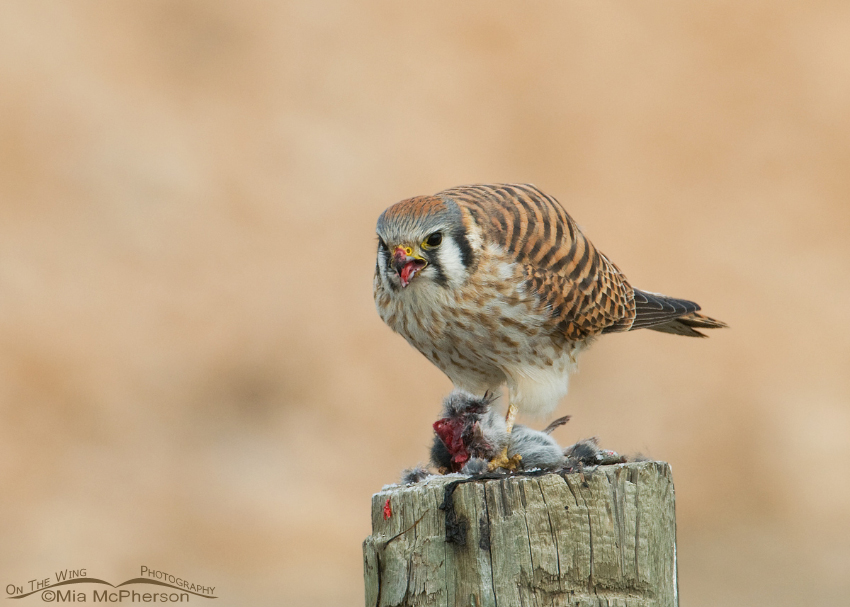 American Kestrel female eating a vole
American Kestrel female eating a vole
One of my most favorite raptors; the American Kestrel, excels at vole control. They are Bantamweight (bird lovers will catch the pun here) vole eating machines and they KO plenty of the little rodents everyday!
I support the American Kestrel Partnership which is a project of the Peregrine Fund. In some areas of North America the populations of these small falcons are on the decline. The American Kestrel Partnership hopes to unify the data-generating capacity of citizen scientists with the data-analysis expertise of professional scientists to advance research and conservation of American Kestrels.
You may wonder why I brought the American Kestrel Partnership up in this post. If people in the Foxboro Community put up kestrel nest boxes their vole population would decrease significantly and by monitoring the nest boxes they could help as citizen scientists. Nest boxes can be purchased here from the American Kestrel Partnership.
Hey Foxboro Community, what are you waiting for? You can get rid of your voles naturally and help our smallest and most colorful falcon in North America.
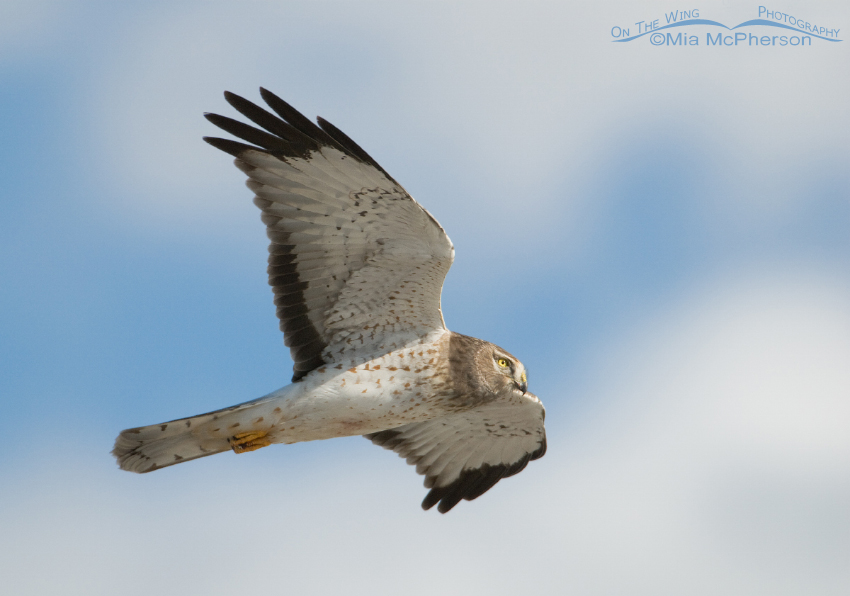 Male Northern Harrier in flight
Male Northern Harrier in flight
If American Kestrels are the Bantamweights of the Vole Control Patrol the Northern Harriers are the Long Distance Fliers. Harriers cruise all day long in search of voles with the aerial agility of stealth airplanes, the voles get no notice before they are captured and dispatched. Harriers nest in the marshes not in nest boxes so they can’t be enticed to book a room in a grassy neighborhood yard but they are great Vole exterminators.
Rough-legged Hawks hover above their prey then swoop down to capture it, their method of capturing voles reminds me of a military Apache helicopter. They get their prey a large percentage of the time. They are only in the Salt Lake Valley during the winter because their breeding territory is much farther north. They can certainly make a dent in the vole population during their brief time in Utah though.
These are three raptors that capture and eat large volumes of voles.
Loggerhead Shrike – The Raptor Wannabe
Loggerhead Shrikes are songbirds but they sure remind me of raptors in their behavior, diet and the way they capture and kill their prey. Their diet consists of insects, spiders and small mammals like the voles that people in Farmington are annoyed with. I’ve seen Loggerhead Shrikes every month of the year though their numbers do seem to dwindle significantly during the winter. Because insects are not available during the coldest months of the year their winter diet consists of small rodents, mostly voles. Loggerhead Shrikes build their own nests in sagebrush and other shrubs. Having them near your property could reduce the number of voles. They might be lightweights but they have big appetites.
Owls
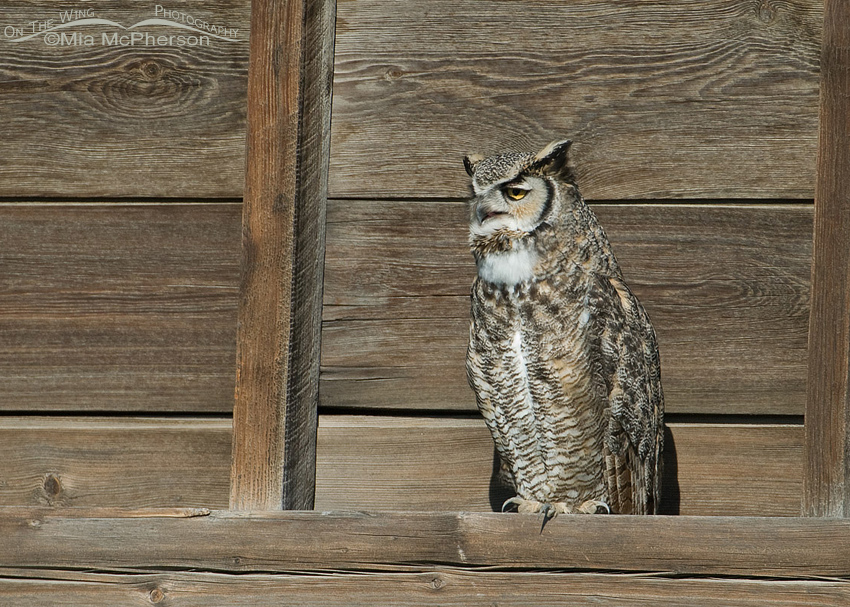 Great Horned Owl warming in the Montana sun
Great Horned Owl warming in the Montana sun
Several owls species native to Utah hunt and eat voles, like this Great Horned Owl, aka Tiger of the Sky, pictured above. Great Horned Owls do nest in boxes, trees and old buildings and if nest boxes are provided they will hunt down and eat those pesky voles.
Other owls in the Salt Lake Valley area that eat voles:
- Barn Owls. Again, if nest boxes are provided they will stick around the area and get rid of small rodent pests.
- Short-eared Owls. They nest on the ground and voles are a high portion of their diet.
- Burrowing Owls. They nest in man-made and natural burrows and they eat voles too.
Wading Birds that eat Voles:
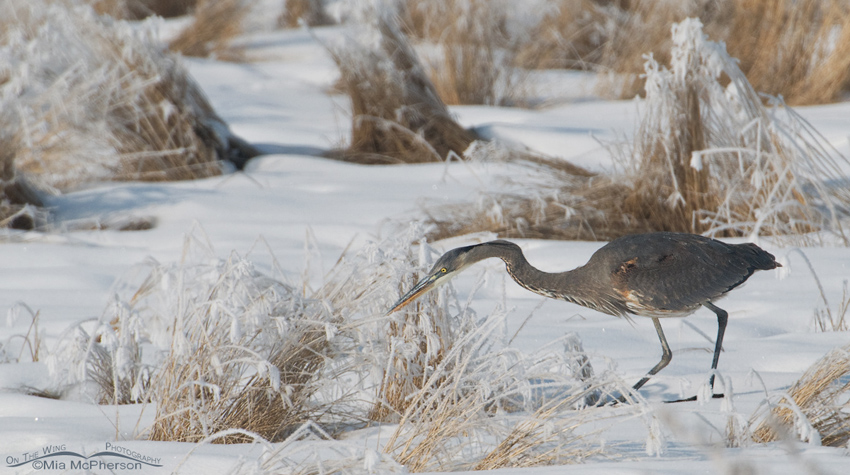 Great Blue Heron stalking voles in winter
Great Blue Heron stalking voles in winter
You might think I have gone off the rails by saying that some wading birds eat voles but they do. When the water is frozen over at Farmington Bay Waterfowl Management Area the Great Blue Herons still need to eat and they stalk and ingest voles. They are wetland and marsh birds and will walk right into yards to hunt if nearby areas include water and cover.
Other wading birds in the SLC Valley area that eat voles:
- Black-crowned Night Herons (year round residents)
- Great Egrets (mostly migrant, some do winter over when the winter is mild)
That pretty much covers the birds that will get rid of and eat voles without using poisons or outdoor cats .
Mammals
There are mammals that eat voles (besides cats). Long-tailed Weasels that are found in wetlands and marshy areas include voles in their diet. They are fast, strong and ferocious when it comes to dispatching their prey. And they are wonderful to see in both their brown summer coat and the snow white winter coat. You won’t think of them as cuddly once you see them attack their prey.
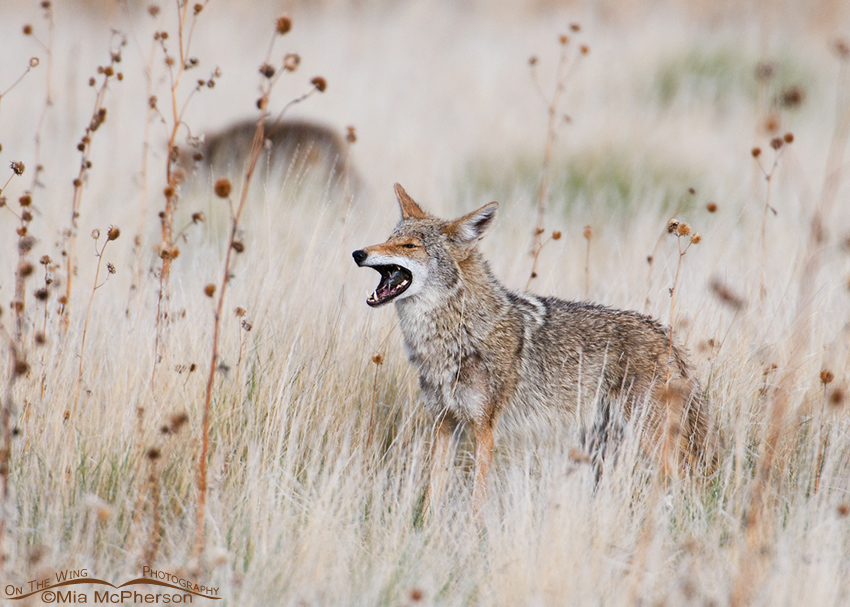 Coyote crunching down on a Vole
Coyote crunching down on a Vole
Coyotes, who are much maligned and often trapped or killed, seem very fond of voles. Once in just a five minute period I saw one Coyote kill and eat four voles.
Coyotes cause fear in some humans, others just want to gun them down and the state of Utah puts a bounty on their heads, which recently (and stupidly) increased from $20 to $50 a pelt. After decades of being hunted down, poisoned and trapped in steel jaws there is no scientific evidence that these bounty programs work as the state, Wildlife Services, part of the U.S. Department of Agriculture, work at all. Scientific studies have shown that as the coyote population decreases there is more food available to them and their litter size increases. The Coyote population rebounds.
- Utah senators approve hike in bounty on coyotes – Wildlife » Humane Society of Utah is opposed to bill.
- Wildlife Services’ deadly force opens Pandora’s box of environmental problems
- Wildlife Services: Does Killing Coyotes Do Any Good?
These bounties on Coyotes have also been a problem for private landowners where unscrupulous coyote hunters enter private land to kill coyotes to get the bounty on their skins. If it were my property they would be reported to the authorities.
For some of the coyote hunters it is a way for them to earn money but I also have my suspicions that some of them just like to hurt and kill other living beings.
I know that if I enter private property and start shooting the wildlife there that I deserve to be punished, jailed and or fined.
I also know that if I poisoned, inhumanely trapped or killed someone’s dog that I can be charged and jailed for being “inhumane”. Both dogs and coyotes are living beings, isn’t it inhumane to kill either one?
Yeah, I know, sheep are being killed by coyotes, they kill outdoor cats and their range is increasing in leaps & bounds in North America.
Yet, Coyotes get my vote for the top mammalian predator of those pesky little voles. We keep shooting the coyotes and the ones that survive kill off that nasty rodents everyone is concerned about.
We’ve upset the balance of nature, the wild animals haven’t. We’ve bought or built homes on land where wildlife has existed for eons and simply because we have put up stick, brick and concrete structures we expect the wildlife to just vacate their homes because we live there?
It isn’t going to happen. Mice, rats and other rodents adjust very well to city life and the voles, well they just love munching on crispy green, water sucking lawns that people put in.
Get a Kestrel box. Put up nest boxes for Barn and Great Horned Owls. Stop poisoning or shooting raptors. Encourage them to take up housekeeping in your neighborhoods and they will do the work after their populations increase. Keep your cats indoors and let the natural predators control the vole problem.
And the next time you see a Coyote think of how many rodents a day they put away that won’t be in your yards and homes. Let’s see 4 voles in 5 minutes and how many hours a day do Coyotes hunt?
It isn’t rocket science.
Birds and wildlife can reduce the high populations of Farmington Utah’s voles if we just give it a chance before grabbing poison or adding to the feral cat problem. Although I have written this because of a local Utah issue concerning the voles much of what I have written applies to every state in America.
Mia



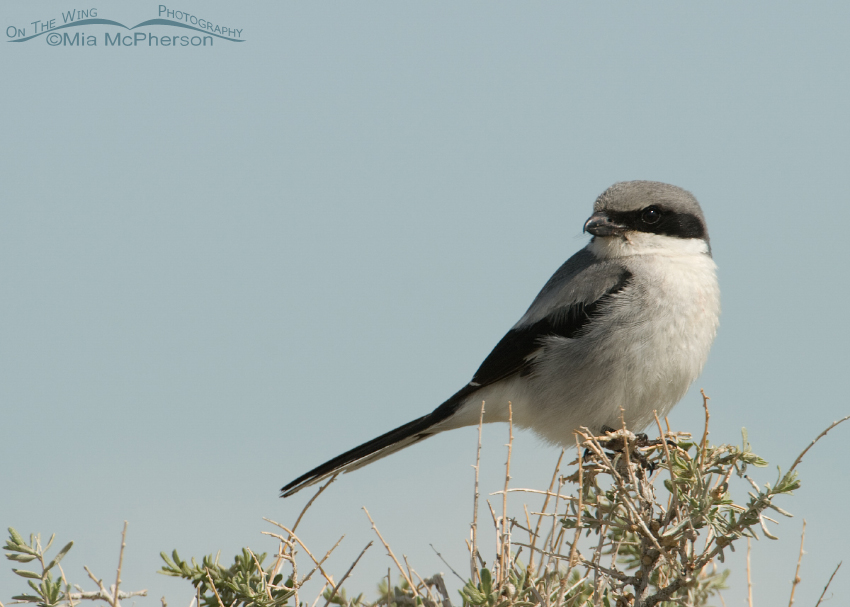
Thus s one of the most important blogs I’ve seen poted…THANK YOU!!!
living in a huge vole infested area of south utah county right now, our grass and hay ground and our vegetable garden are all being disintegrated daily….our farm cats and local birds of prey (most all of them pictured above) can’t keep up with them…..regarding outdoor cats, we have ALL of our cats neutered or spayed, yearly innoculations and wormings, house cats are declawed too….we have house cats that go outdoors and kill mice and voles everyday and everytime we have a new feral cat arrive on our place or someone drops off a kitten they don’t want “because look there’s a farm drop it off there” then we humanely trap it and get vouchers from UTAH’S NO MORE HOMELESS PETS, take it to a participating veterinarian and get it neutered or spayed, it’s shots and wormed….over the past 10 yrs or so my local vet has done many many feral cats for me…there’s a huge dry food feeder in my barn for them, but they actually prefer the mice and voles which are so plentiful right now. btw all our dogs are neutered or spayed and get their annual shots are wormed monthly. we believe in being responsible. it is a fallicy by the general population to think it’s too expensive to neuter or spay dogs and cats since there are many many organizations here in utah that help with low fees or in some cases free…you just need to check around. i know what we do here on our farm is just a drop in a bucket, but we do try….now to get rid of voles…well, this year it seems next to impossible….but we’ll keep trying
I have yet to encounter a vole, but what is interesting are the examples you have of birds which do or are preying on voles. Though the avian subjects are ones that are the more familiar, nonetheless it never tires to see even more examples of them, and this is similar to the approach I have when I am birdwatching.
Mathew,
Voles can be difficult to see but lately everywhere I look when I am out in the field I see a vole scurrying by. I am sure there are more birds that eat voles than I have shown here because voles can be found in so many locations. Thanks for commenting.
thank you, Mia, for this compelling post.
i totally agree re: the cat issue, but it is a difficult one, to say the least. i argue–gently as possible–with a friend all of the time about her cats. She volunteers at a rescue center and has adopted 4–signing papers pledging to keep them indoors–but then lets them roam freely. It just blows my mind that she can justify this (given her beliefs and morals) and that she believes it’s “cruel” to train a cat to be indoors–especially since she knows all of the cats i’ve lived with over the years and how the very happy lives they have lived, “confined” to my house.
i support and applaud all of the spay and neuter efforts, and in some places (the island i visit) it is finally helping to significantly reduce the number of feral domestic cats. It’s amazing to me that people think nothing of spending another $2-300 on a new iPhone or other techno gadget they don’t need but then plaintively complain that they “can’t afford” to support programs that will help protect our endangered wildlife. It’s a level of arrogance in humans that drives me nuts.
Zephyr, I wish that there were more of the general public that was aware of the damage outdoor cats cause on the environment and wildlife and how it kills cats much faster than being indoor cats. It would blow my mind too about your friend signing papers pledging to keep the cats indoors and then letting them roam freely outside. She is putting her cats at risk. It is more cruel to to cats to make them be outdoors.
It blows my mind, too, Mia. It’s very upsetting. I know for a fact she has lost at least 2 cats to predators, and yet she remains in denial. It is an example of the worst kind of thinking about the animal world…she is so “Walt Disney” about it all. If she weren’t such a good person in so many other ways, i could not be friends with her.
I can understand your feelings on this Zephyr.
I can’t tell you how much I appreciate this post Mia. The outdoor cat problem is a huge one in the U.S. and ABC has been working on it for years but the cat lobby is too strong. All one has to do is look at Hawaii to see the problem with feral cat issues. Poison? That seems to be many people’s answer to everything. Yard pests, insects, coyotes, what’s next? You spoke to the absurd idea of killing coyotes for a bounty very well. This is an article you and your readers might find interesting I found on Audubon Magazine by Mike Finkel on “Coyotes: The Ultimate Survivor” (the link no longer works so I removed it ~ Mia) stating that there are about 400,000 killed each year in the U.S. yet they continue to flourish. That’s almost one coyote every minute! Sometimes I don’t understand people. Some think we are the only animal on the planet or that we have some God given right to kill anything we chose.
OK, on a more positive note, your photos are absolutely astonishing! The raptor shots are gorgeous and I love that coyote photo! Four voles in five minutes, wow! I must say, to me, the most striking shot is the Great Horned Owl in front of the granary. It’s just something I’m not used to seeing.
Thank you for mentioning the Burrowing Owl too. In California, voles are the mainstay of the Burrowing Owl, if there is a mainstay any more. Their numbers have been so depleted from the extermination of the ground squirrel that we may never get them back. You know, those pesky ground squirrels have to be killed too!
Larry,
Outdoor cats are a huge problem and wildlife is suffering & dying because of them. The feral cat populations in this country are growing by leaps and bounds, especially during this recession where people dump their animals because they are having a hard time putting food on their own tables.
I enjoyed the article on the link you posted. Very informative. A healty coyote population would keep many “pests” under control, I wish more people were aware of that.
Thank you for your very kind words on my images, we have such amazing sunjects in nature & wildlife photography!
The Burrowing Owls in CA and else where in the west need our help to survive and that means not killing the animals they prey upon or coexist with, for instance Prairie Dogs. They also need to be protected from thoughtless people who walk on the burrows and collapse them.
Thank you for you comment on this topic Larry.
Well said. This is a temporary population increase in a species that unlike say a roof rat has no interest in living in your house and eating your garbage. Voles are a crucial food for many animals and “solutions” like throwing a bunch of cats into the grassland would be counterproductive at best as they proceed to dine on nestlings of n harriers and short-eared owls that would otherwise grow up to be voracious vole predators.
Rather than lobbying for a “cleansing” of the natural area next to the subdivision, the neighbors should focus on excluding the voles from their yards if they are bothered by them. They’re not great climbers so some fine wire mesh a foot or so high and buried about that deep should keep most out of your vegetable garden.
Thank you Chris. I agree that outdoor cats can eat the young of predators like Northern Harriers and Short-eared Owls which eliminates the natural predators that could decrease the vole/rodent population. I wish the general public was more aware of the effects of outdoor cats and posions and how that impacts the wildlife in an area.
Excellent Article Mia. Have you considered submitting it to other publications or thought about doing that? I am sure Audubon?, Cornell? or similar conservation minded organizations may be interested in the issues and the solutions you discuss. And you have framed it well with your own photography. so it brings the issue more the forefront and makes it more readable to the uninformed.
Stu, I hadn’t considered submitting this article to other publications. I’m not a writer, just someone who writes about birds and nature.
It’s all relative Mia. First life, then death. Sooner or later we all visit it. Interesting post. Love the Great Horned Owl. Carol
Thanks Carol, the cycle of life is a natural one but the cycle of poisoning pests and killing the natural predators because of the poisons isn’t. Thank you for commenting!
Awesome post, I totally agree and have written a similar post on poisoning pest creatures such as voles, you are however much more informed about what wildlife consumes. I had no idea that Herons eat voles for example. Hawks are beginning to disappear from this city for various reasons, one is due to the use of poison to kill gophers and voles along the freeways and in new developments. It is a shame. As for outdoor cats, that’s a no, no. I have seen what cats do to birds, mine are fixed and strictly indoor. They are healthier for it and quite content. Cat populations are too high everywhere and there are far too many are being put down, if they are not abandoned.
Susan,
I wish that the general public was more aware of the fact the rodenticides often kill the animals/birds that prey on the rodents too. It really is a shame that in killing “pests” we are also killing the very creatures that could help eliminate the pests. So very sad. Thanks for your very thoughtful comment.
I had voles one year and they simply disappeared the next. Between the feral cats around here and the plentiful hawks, coyotes etc. I guess we’re in balance. Although I must admit the feral cats give me pause.
Thanks for your comment Merrill, I’m sure that if we have a harsh winter here in 2012/2013 the vole population will plummet. I worry about the feral cats too, they can be killed and if they are captured they will most likely end up euthanized. The best controls are the natural predators.
Fantastic photojournalism as always Mia!!!
Thank you Matt, that news article inspired me to write this post and get up on my soapbox! Natural predators are far better than poisons or outdoor cats in reducing rodent populations.
This is a great post, Mia, and it makes very valid points! Voles are placed on this earth to be food for so many animals, and they are very important to the ecosystem. Your photos are exceptional!
Thanks PrairieBirder, I hope that even a few people go out and get Kestrel boxes, it could help with their rodent problems!
Thanks for the article and images. I believe these issues are due to human encroachment on natural habitat. It’s probably better that if you’re moving into areas that used to be part of a forest or prairie, wetland, or any other type of land with ongoing active ecosystems, not to hold on to any type of illusions or ideals. Nature is by “nature” cruel (cruel as far as disappointing us with its behavior). The consequences of moving into such environments with such illusions alludes to the fact that humans continue to desire “taming” the environment to its most ultimate consequences.
Maria, it is my pleasure to share my images and my thoughts on this matter. We have encroached on natural habitats, built on land where it isn’t wise to do so (think Florida swamps that have been filled in and then have sinkholes) and then expect we can control it all. We can’t.
They can’t round up all the voles and stick them on a reservation. But we can encourage the natural predators to control the population.
Thank you for your thoughtful comment.
Wow, a terrific post, Mia. First off, your photos are amazing. You’ve captured wild animals being wild animals, not just sitting and looking pretty. I love it.
I cannot believe someone would recommend those two steps for removing voles. They should consider what the overall rodent population will be when they kill off predators with poisoned food. Like Syl said, everything is interwoven.
Hope your post is picked up and distributed far and wide – it has application to everyone.
Thank you Tami, I should have mentioned that none of the birds or animals was baited because that is something I never do. Poisons are going to poison us all and that upset me but so did the suggestions of outdoor cats. Outdoor cats are killing birds, carry diseases and the cats themselves could end up coyote or owl food.
Thanks again for your inciteful comment.
I hope lots of folks read this article and view the photos which by the way are fabulous. Voles can be really damaging to crops and gardens. I had a pair a few years ago get into my green house and in less than an hour, had absolutely wrecked it. Nature is so wonderful with its own checks and balances..man really needs to leave this alone..God knew what He was doing when he created it. Thanks for all your in put. Have a great day..